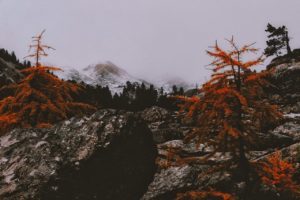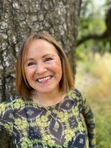Mary Reynolds Thompson's Blog
October 10, 2018
“Walking” by Linda Hogan
Sometimes I hear it talking. 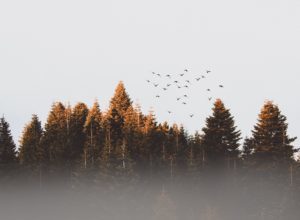 The light of the sunflower was one language, but there are others, more audible. Once, in the redwood forest, I heard a beat, something like a drum or heart coming from the ground and trees and wind. That underground current stirred a kind of knowing inside me, a kinship and longing, a dream barely remembered that disappeared back to the body.
The light of the sunflower was one language, but there are others, more audible. Once, in the redwood forest, I heard a beat, something like a drum or heart coming from the ground and trees and wind. That underground current stirred a kind of knowing inside me, a kinship and longing, a dream barely remembered that disappeared back to the body.
Another time, there was the booming voice of an ocean storm thundering from far out at sea, telling about what lived in the distance, about the rough water that would arrive, wave after wave revealing the disturbance at the center.
Tonight I walk. I am watching the sky. I think of the people who came before me and how they knew the placement of stars in the sky, watched the moving sun long and hard enough to witness how a certain angle of light touched a stone only once a year. Without written records, they knew every night, the small, fine details of the world around them and of immensity above them.
Walking, I can almost hear the redwoods beating. And the oceans are above me here, rolling clouds, heavy and dark, considering snow. On the dry, red road, I pass the place of the sunflower, that dark and secret location where creation took place. I wonder if it will return this summer, if it will multiply and move up to the other stand of flowers in a territorial struggle.
It’s winter and there is smoke from the fires. The square, lighted windows of houses are fogging over. It is a world of elemental attention, of all things working together, listening to what speaks in the blood.
Walking, I am listening to a deeper way. Suddenly all my ancestors are behind me. Be still, they say. Watch and listen. You are the result of the love of thousands.
From the essay, “Walking” by Linda Hogan, (c) Parabola Press 1991.
Take a walk in nature and listen in a deeper way– What do you hear? What do you see? What do you feel? After you have recorded your experiences in your journal, read them back and ask yourself: What speaks in my blood?
The post “Walking” by Linda Hogan appeared first on Mary Reynolds Thompson.
Advice from the Earth in Troubled Times
Recently, I have been sharing on Facebook 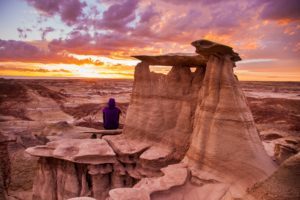 about my feelings of rage and frustration at what is going on in the world. We are headed in the wrong direction on so many issues. It’s heartbreaking and hope-crushing. After one Facebook rant, a woman asked me, “What do you think we should do with our anger?”
about my feelings of rage and frustration at what is going on in the world. We are headed in the wrong direction on so many issues. It’s heartbreaking and hope-crushing. After one Facebook rant, a woman asked me, “What do you think we should do with our anger?”
In all honesty, I have no idea, other than the obvious: to vote, march, organize. So I did what I have learned over the years: I brought her question to the earth’s landscapes––to the deserts, forests, oceans and rivers, mountains, and grasslands. I have long thought of these landscapes as wise ancestors.
It seems to me that now, more than ever, we need to turn to the earth for answers. Over the many years of writing and teaching about the landscape archetypes, I have experienced and witnessed how they move us out of our immediate, egoic concerns, allowing us tap into an ancient knowing that lives deep in our cells.
The landscapes have always held for me both personal and collective guidance. And so once again, I wanted to hear what they had to say. These are the messages I received.
Deserts—Learn to live in the bone. The more you can take care of your own needs, the less dependent you will be on systems that exploit both you and the planet. Know you are enough, that you matter. Look to the simple things of life for joy. Take less, live from the spirit. Make time to grieve.
Forests—Enter the darkness, for it out of the darkness that new things will be born. Know that the path is never straightforward. Where you stand now is not necessarily indicative of where you will end up. Much is yet unseen and unimagined. Trust your instincts. Whatever you do or don’t, impacts the web of life.
Oceans and Rivers—Just as water has to overcome obstacles to find its way to the ocean, so the power of your longing can help you move through these troubled times. What do you truly long for? This is not the time to hold back. Live from the depths of your wild heart. Become the guardian of your own waters—the purer you flow, the more you will revitalize everything you touch.
Mountains—Mountains were formed by friction or fire. Your job is not always to cool things down. Sometimes we need to erupt. Sometimes anger is the only appropriate response. If you are frightened of upsetting people, nothing will change. Feel into your granite nature. Opposition gives rise to soaring peaks.
Grasslands––Tend to the small patch of earth that is yours to tend and cultivate beauty in everything you do. Stop judging and learn the way of joy. Your gifts are needed. You belong here. Begin the sacred work of healing this broken world. It’s time to reweave community and renew our hope.
Now your turn: In any way that feels right to you, enter one or more of the landscapes and ask for advice. Settle in and get quiet. Listen. Then write down the messages you receive in your journal. Please share your Earth wisdom here. Together, we can turn to the Earth to help us dream The New Story.
The post Advice from the Earth in Troubled Times appeared first on Mary Reynolds Thompson.
September 13, 2018
My Tree by Rolf Jacobsen
My Tree
It’s the cedar – the mother of lingonberry – that is my tree.
It doesn’t need summer – rain and snow are enough.
Its top is high and ragged, no one hears its sound.
It has a tough, long root that it sinks into gravel.
Over its shoulder is wind, over its hair, clouds.
Storms don’t bring it down. It may kneel. But it stays there.
Maybe it has some destination in mind – the white bed of
crowfoot flowers
At the end of the world where the glaciers rule.
Among all the trees on earth it is nearest to the great snow,
To the blind sun of the glacier. I want to be a tree like that.
(c) Rolf Jacobsen
What is your favorite tree? Simply name it.
Then write a character sketch of your favorite tree.
Finally, write a piece about your tree that begins, “I want to be a tree like that….” After you have written your piece, reflect on the tree’s qualities you would like to embody.
The post My Tree by Rolf Jacobsen appeared first on Mary Reynolds Thompson.
Once Upon a Time, In a Forest
I have always believed that 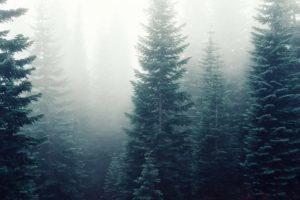 powerful stories begin with deep listening. One such story is that of world-renowned wild soundscape recorder, Bernie Krause, whom I met at a reading I gave a couple of years ago in Sonoma.
powerful stories begin with deep listening. One such story is that of world-renowned wild soundscape recorder, Bernie Krause, whom I met at a reading I gave a couple of years ago in Sonoma.
Lincoln Meadow in the Sierra Nevada mountains sits at about 2,000 meters. In 1998 a logging company convinced local residents that no environmental impact would result from what they called “selective logging” of the surrounding forest.
Krause would discover differently. To the eye, the logging company’s claims appeared to be true––the forest and meadow looked undamaged. Kraus’ recordings revealed another story.
Before logging, the meadow at dawn resounded in birdsong. Afterward, it was silent. except for the creek that ran through it. The chorus of quail, sparrows, finches, and sapsuckers now reduced to the tapping of a distant woodpecker.
Over the past twenty-five years, Krause has recorded this place fifteen different times—at the same time of year, at the same time of day, under the same weather conditions. But the meadow has yet to fully regain its voice.
When we go to nature to listen deeply we hear what is crying out to be heard, acknowledged, and expressed. In this way the certitude of the expert is replaced by the curiosity of the poet. The person who wonders, “What is this that moves me?”
Some will say that the stories we bring home from the wild defy logic and reason. They will tell us that trees have no feelings, do not scream with thirst, or suffer when felled. They will tell us that we are too emotional in our recounting. They will tell us that the loss of a few old trees can’t possibly affect a meadow.
But we shall keep telling our stories. Like spores, some will be be carried light as air via a blog or a casual conversation. Who knows where these stories will travel or whom they will touch?
And then there are those stories that are like seeds. They grow in the dark duff of our souls, over time, until we are finally ready to give them voice. Because we put so much of ourselves into them, they are an expression of our whole being, as powerful as an intact forest.
More than anything, story touches people, shifts consciousness, makes us care for those other than ourselves. If you ever doubt that, think about Krause’s story. The meadow he spoke about has been silenced, but over one million people watched Kraus’ TED Talk and heard its song. Will they ever think about the natural world the same way again?
The post Once Upon a Time, In a Forest appeared first on Mary Reynolds Thompson.
August 9, 2018
What Are You Waiting For? by Kai Siedenburg
What Are You Waiting For?
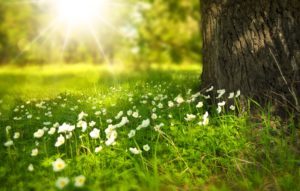
What powerful seeds
lie dormant
deep within you,
longing
to break through
the surface
and reach
their slender stems
toward the light?
What tender buds
are swelling
inside you,
yearning to unfurl
their radiant petals
and reveal their
hidden beauty?
What songs and stories
are swirling
deep within
your breast?
What wild
and magical dreams
are stirring your soul?
What are you
waiting for,
dear one?
The world is hungry
for your beauty,
calling you
to bring forth
your deepest gifts.
The seeds
have been patient
for so long—
waiting
for just a few drops of rain,
a few rays of sun,
a few kind words…
don’t deny them that.
Don’t wait
until it feels safe
to break open…
that day
may never come.
From Poems of Earth and Spirit: 70 Poems and 40 Practices to Deepen Your Connection with Nature by Kai Siedenburg
http://ournatureconnection.com/writin...
What seeds lie dormant within you? Name the seeds, so that you come know them. Perhaps the seed is the seed of a community you plan to create, a poem that wants to emerge, a new relationship, or a desire for more joy.
After you have named the seeds, ask what they need to bloom and flourish. Journal your answers. What have you discovered?
What would happen if you didn’t wait to feel safe, and broke open now?
The post What Are You Waiting For? by Kai Siedenburg appeared first on Mary Reynolds Thompson.
June 26, 2018
Do You Carry the “Tender Gravity” of Kindness?
 about kindness of late. How could I not, when the absence of it gapes like an open wound at the center of our world.
about kindness of late. How could I not, when the absence of it gapes like an open wound at the center of our world.What are we doing putting children in cages? What are we doing destroying rivers and trees, animals and soil? What we are doing to each other?
The word “kindness” is related to the word “kin.” We are more easily kind when we feel a sense of connection. The false notion that we humans are separate and discrete beings kills kindness, cleaving us from the web of life. We are all related, part of one interdependent Earth community, only we can so quickly forget.
I have just returned from London where I have been arranging for long-term carers for my 90-year-old mother who recently fell down a flight of stairs. She has fallen a lot lately, and it’s clear that living alone is no longer safe.
Mum’s latest fall landed her in hospital. The National Health Service was wonderful, following up with her when she was finally sent home. NHS helpers came to help Mum dress, take her for walks, chat with her. They were all amazingly kind– the kind of “kind” that fills you with hope for humanity. They soothed her wounds, rubbed creams into her bruised legs, made her laugh.
Their warmth and help offered me much needed breaks. I am not, it turns out, a natural carer. I felt caged by responsibility, and many of the tasks that fall to a carer–cooking, cleaning, listening to the same stories many times over, do not come easily to me. There was a lot of roll-up-your-sleeves and clear-out-decades-of-clutter work to be done. I missed my peaceful mornings, my husband, my writing time.
Truth is, at moments my own unmet desires felt overwhelming. I had been in London in March to put on a 90th birthday party for Mum. Then I was back again for over two weeks at the beginning of May–a stressful time when Mum’s vulnerabilities were becoming clearer. I missed so much not having my older brother David around. He died five years ago leaving me as the only child. Now here I was in June, feeling as if I had no grip on my own life.
But I did what was mine to do. I took care of Mum, because she is my mother. My kin. And what I discovered is this: the kinder I was, the more love I felt.
I don’t believe kindness is always simple. Nor is it always convenient. And yet, as the poet Naomi Shihab Nye writes, it is the “tender gravity” of kindness that holds our world together.
In a strange way, it was my mother’s fall that pulled me back into my heart. What in this falling apart world is pulling you back into yours?
The post Do You Carry the “Tender Gravity” of Kindness? appeared first on Mary Reynolds Thompson.
Kindness by Naomi Shihab Nye

Kindness
Before you know what kindness really is
you must lose things,
feel the future dissolve in a moment
like salt in a weakened broth.
What you held in your hand,
what you counted and carefully saved,
all this must go so you know
how desolate the landscape can be
between the regions of kindness.
How you ride and ride
thinking the bus will never stop,
the passengers eating maize and chicken
will stare out the window forever.
Before you learn the tender gravity of kindness,
you must travel where the Indian in a white poncho
lies dead by the side of the road.
You must see how this could be you,
how he too was someone
who journeyed through the night with plans
and the simple breath that kept him alive.
Before you know kindness as the deepest thing inside,
you must know sorrow as the other deepest thing.
You must wake up with sorrow.
You must speak to it till your voice
catches the thread of all sorrows
and you see the size of the cloth.
Then it is only kindness that makes sense anymore,
only kindness that ties your shoes
and sends you out into the day to mail letters and
purchase bread,
only kindness that raises its head
from the crowd of the world to say
it is I you have been looking for,
and then goes with you every where
like a shadow or a friend.
(c) Naomi Shihab Nye
From Words Under the Words: Selected Poems
* Describe the desolate landscape between regions of kindness. What does it look and feel like? How do you recognize it? When do you go there?
*What sorrows do you carry? Write a poem that links your sorrows with the ways in which they have opened your heart.
*Spend time looking deeply at a photo of a refugee. Write about their journey from their perspective. What kind of courage did it take to flee their homelands? What prompted them to leave? What do they feel having arrived at their destination? Allow your imagination to “catch the thread” of their sorrows and their experiences.
The post Kindness by Naomi Shihab Nye appeared first on Mary Reynolds Thompson.
June 15, 2018
The Seven of Pentacles by Marge Piercy
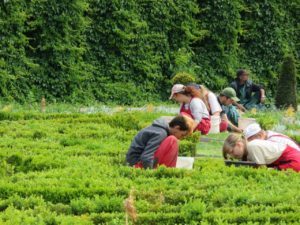 The Seven of Pentacles
The Seven of Pentacles
Under a sky the color of pea soup
she is looking at her work growing away there
actively, thickly like grapevines or pole beans
as things grow in the real world, slowly enough.
If you tend them properly, if you mulch, if you water,
if you provide birds that eat insects a home and winter food,
if the sun shines and you pick off caterpillars,
if the praying mantis comes and the ladybugs and the bees,
then the plants flourish, but at their own internal clock.
Connections are made slowly, sometimes they grow underground.
You cannot tell always by looking what is happening.
More than half the tree is spread out in the soil under your feet.
Penetrate quietly as the earthworm that blows no trumpet.
Fight persistently as the creeper that brings down the tree.
Spread like the squash plant that overruns the garden.
Gnaw in the dark and use the sun to make sugar.
Weave real connections, create real nodes, build real houses.
Live a life you can endure: Make love that is loving.
Keep tangling and interweaving and taking more in,
a thicket and bramble wilderness to the outside but to us
interconnected with rabbit runs and burrows and lairs.
Live as if you liked yourself, and it may happen:
reach out, keep reaching out, keep bringing in.
This is how we are going to live for a long time: not always,
for every gardener knows that after the digging, after the planting,
after the long season of tending and growth, the harvest comes.
(c) Marge Piercy
* What connections are you making? What do you hope will grow from them?
*Truly, what if you lived as if you liked yourself, what would change?
*Write a poem, based on a Tarot Card, as Piercy has done. What card did you pick? What does your poem tell you?
The post The Seven of Pentacles by Marge Piercy appeared first on Mary Reynolds Thompson.
April 12, 2018
Poetry by Pablo Neruda
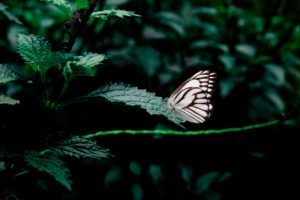
And it was at that age… Poetry arrived
in search of me. I don’t know, I don’t know where
it came from, from winter or a river.
I don’t know how or when,
no, they were not voices, they were not
words, nor silence,
but from a street I was summoned,
from the branches of night,
abruptly from the others,
among violent fires
or returning alone,
there I was without a face
and it touched me.
I did not know what to say, my mouth
had no way
with names
my eyes were blind,
and something started in my soul,
fever or forgotten wings,
and I made my own way,
deciphering
that fire
and I wrote the first faint line,
faint, without substance, pure
nonsense,
pure wisdom
of someone who knows nothing,
and suddenly I saw
the heavens
unfastened
and open,
planets,
palpitating planations,
shadow perforated,
riddled
with arrows, fire and flowers,
the winding night, the universe.
And I, infinitesimal being,
drunk with the great starry
void,
likeness, image of
mystery,
I felt myself a pure part
of the abyss,
I wheeled with the stars,
my heart broke free on the open sky.
Pablo Neruda
English version by Anthony Kerrigan
Can you remember a favorite poem from childhood? What did you love about it?
When did poetry arrive for you? What is your relationship to poetry? Do you write it, read it? Where does it live for you?
Write the first faint line… what will you say? What will it open for you?
The post Poetry by Pablo Neruda appeared first on Mary Reynolds Thompson.
Sound of the Wild
Ever since I was little 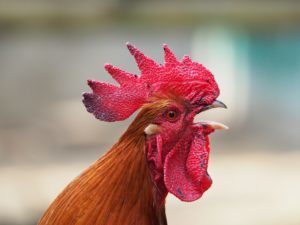 girl I have been in love with onomatopoeia, though I didn’t know to call it that back then.
girl I have been in love with onomatopoeia, though I didn’t know to call it that back then.
Words like splash, splodge, and cock-a-doodle-doo filled me with fierce joy. I would yell them out loud when jumping in muddy puddles or tumbling down a grassy knoll. They were my battle cry.
Robust words have a physicality to them. At times, feeling like the clip-clop of horseshoes on cobblestones. At others, like a broom swished across the floor. Sometimes they snap like twigs.
To read the poetry of Gerard Manley Hopkins out loud is to give voice to language in love with movement, nature. His is an animate language–full of breath and bravery.
Glory be to God for dappled things –
For skies of couple-colour as a brinded cow;
For rose-moles all in stipple upon trout that swim;
Fresh-firecoal chestnut-falls; finches’ wings;
Landscape plotted and pieced – fold, fallow, and plough;
And áll trádes, their gear and tackle and trim.
All things counter, original, spare, strange;
Whatever is fickle, freckled (who knows how?)
With swift, slow; sweet, sour; adazzle, dim;
He fathers-forth whose beauty is past change:
Praise him.
I recited the poem at the Conference of World Affairs last year while a musician accompanied me on guitar. Poetry is song.
When I began to study as a poetry therapist almost fifteen years ago, a deep love for language welled up in me again. I saw how poems unlocked energy, lit fires, called someone back from despair.
It is not enough to read a poem on the page, to yourself. Poetry needs to be spoken out loud; it is part of an oral tradition that draws all living things together. Writes David Abram in Becoming Animal, “Entranced by the denotative power of words to define, to order, to represent the things around us, we’ve overlooked the songful dimension of language so obvious to our oral [storytelling] ancestors. We’ve lost our ear for the music of language — for the rhythmic, melodic layer of speech by which earthly things overhear us.”
My life is poetry now. The poetry of Earth… language with the roots left on. This is what Linda Hogan tells us in her essay, Walking, “Sometimes I hear it talking. The light of the sunflower was one language, but there are others, more audible. Once, in the redwood forest, I heard a beat, something like a drum or heart coming from the ground and trees and wind. That underground current stirred a kind of knowing inside me, a kinship and longing, a dream barely remembered that disappeared back to the body.”
This is what calls to my wild soul: language that cannot be easily contained–but must be taken outdoors and read to the trees, stars, and all that is swift, slow, sweet, sour, adazzle dim.
What is your favorite poem to read out loud? Please share it with us.
If you live in the UK, also please consider joining my husband and me at Hawkwood in Stroud for Rewilding the Soul: Writing from the Natural World
The post Sound of the Wild appeared first on Mary Reynolds Thompson.

